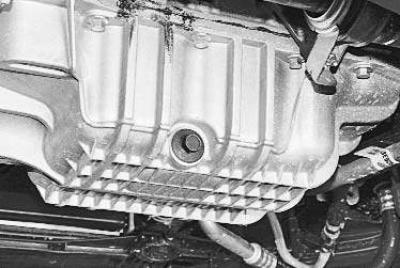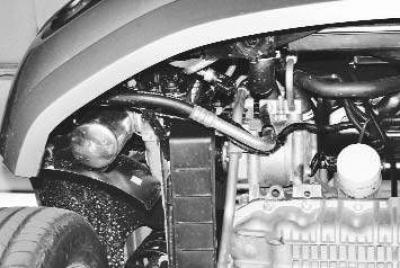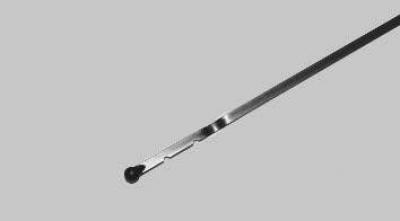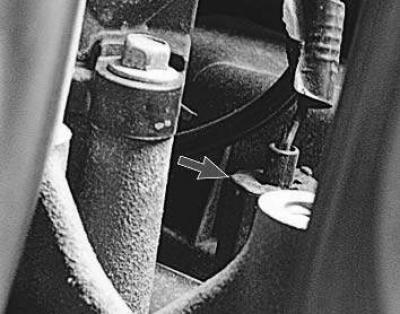Warning! If the emergency oil pressure drop warning light comes on when the engine is running and continues to light at an increased speed, then this is an alarming sign. It is necessary to immediately stop the movement, stop the engine and find out the cause. Further operation of the engine with reduced oil pressure can lead to serious damage to it and high financial costs for repairs.
Checking the lubrication system
1. Open the hood. Do not rush to immediately check the engine oil level - let it drain into the oil sump, this will take two to three minutes. During this time, carefully inspect the engine for fresh oil drips.

2. Look under the front of the car - if the engine oil sump is broken, if there is a leak.
Note. If an oil leak is found from a punctured oil sump, try to temporarily plug it in place. To do this, you can use a car camera, a piece of rubber, a rag, a wooden cork, etc. A good result can be obtained by the use of modern repair materials such as «cold welding», available for sale in car dealerships.

3. Pay attention to the oil filter. Oil may leak from under the filter rubber gasket if it is damaged or if the filter is loose. Sometimes it is enough to tighten it a little clockwise.
Attention! Hot engine parts can burn you, so wear gloves and long sleeves.

4. Remove the dipstick, wipe it with a clean rag and reinsert. Remove the dipstick again and check the oil level. It must be between the top and bottom marks (notches on the edge of the probe).
5. If the oil level is below the lower mark, add oil to the norm.
Note. In the absence of a funnel for adding oil, you can use a funnel made from a plastic bottle.

6. Start the engine. If the emergency oil pressure drop lamp goes out at a normal level, you can continue driving. If the lamp does not go out, check the oil pressure sensor. The sensor is located at the bottom front of the cylinder block next to the clutch housing. Unscrew the stock oil pressure switch and install a mechanical pressure gauge in its place. If the pressure at normal idle speed is more than 0.1 MPa (1.0 kgf/cm2) and increases with increasing speed, the sensor or its electrical circuit is faulty.
Note. If you do not have a pressure gauge, all that remains is to check the reliability of the contact in the block with the sensor wires or replace the sensor with a known good one.
If, after eliminating all visible causes, the oil pressure in the engine is insufficient (oil pressure warning light on), diagnose and repair the engine (see sect. «Engine»).
Attention! Do not try to drive to the garage - the engine will fail. Have the vehicle with the engine inoperative towed for repair.
Note. Before repairing the engine, check the condition of the oil pump (see «Oil pump repair»).
Visitor comments